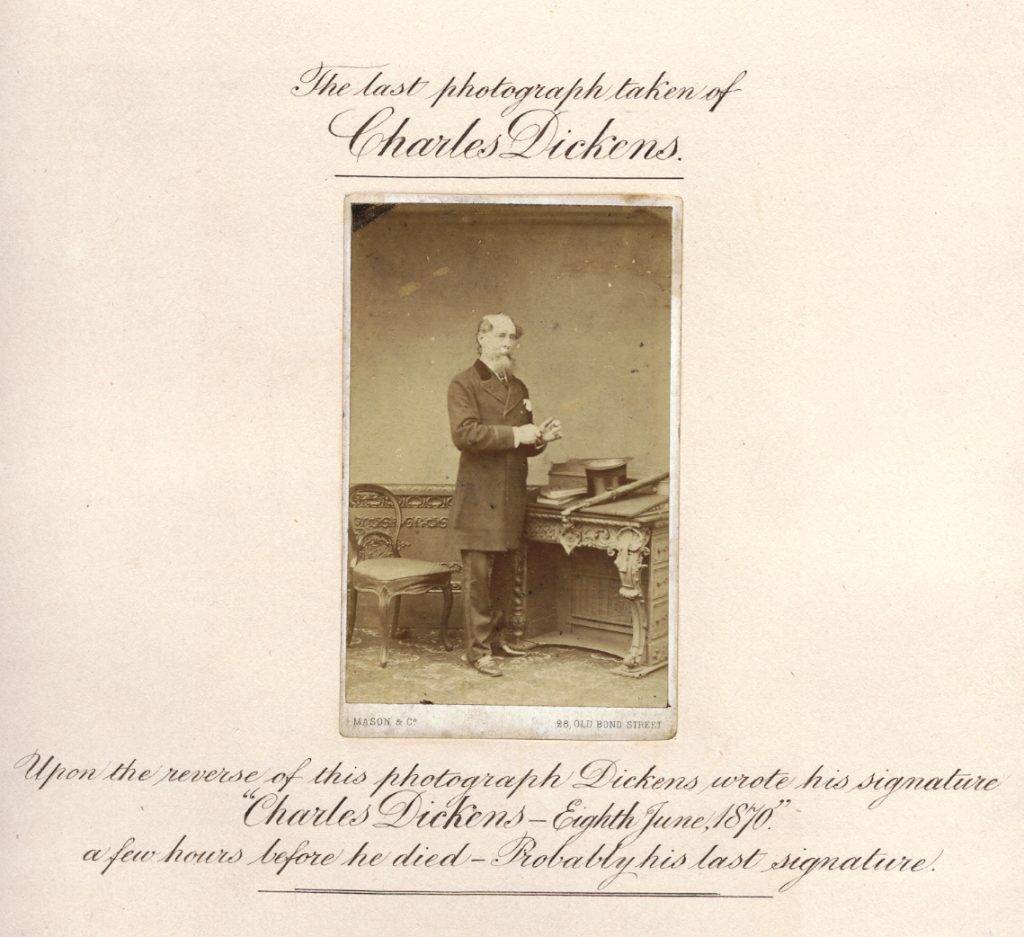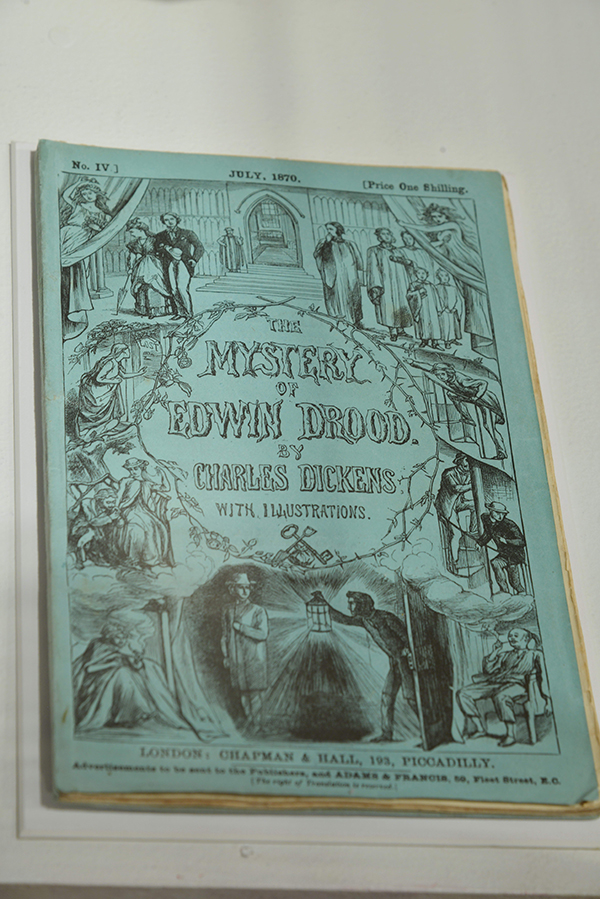French literary critic Roland Barthes famously published an essay titled “The Death of the Author,” which argues against interpreting literature primarily in light of the author’s politics, religion, or historical context. For Barthes, to prioritize an author’s meaning is to impose a limited interpretation onto a work of literature, rather than considering the many meanings and interpretations it may have for readers across different cultural and historical contexts. Rather than focusing on the author’s intent, scholars inspired by this school of thought might focus on the literary qualities of a work, or on how readers respond to it.
But how do you interpret a work of literature when the death of the author is literal, and took place before the book was completed?

Charles Dickens enjoyed an unusual level of financial success and popularity during his literary career; many of his sprawling stories were first published in serial installments and then republished as full-length novels. The Mystery of Edwin Drood was planned along the same lines: twelve installments were scheduled from April 1870 to February 1871. The story begins with John Jasper, a choirmaster with unhealthy affinities to opium dens and creepy cathedral crypts; Edwin Drood, an aspiring engineer and Jasper’s nephew; and Rosa Bud, Drood’s fiancée, who is also admired by both Jasper and hotheaded Neville Landless. Neville and Edwin quarrel, but are reconciled with the help of the kindly Reverend Crisparkle. However, on the night of the reconciliation, Edwin Drood mysteriously disappears–leaving behind his watch, chain, and shirt-pin, but not the heirloom ring he was supposed to give to Rosa.
The inhabitants of the gloomy cathedral town of Cloisterham are left with many questions. Where did Drood go? Was there foul play? If so, who was responsible? And who is Dick Datchery, a stranger who shows up after Drood’s disappearance and starts asking questions? There are clues and red herrings: What happened to Rosa’s ring? Why was Neville leaving town the morning after the disappearance? Why did Jasper buy a strong silk scarf, which is never mentioned again? The process of publishing serially allowed Dickens to engage with reader responses as each installment circulated, and he is known to have altered the course of more than one novel in response to public speculation. By seeding the story with plausible doubt as to Drood’s fate, as well as motives and weak alibis for several characters, Dickens began to build a case that could be coherently solved in several different ways.
But in June 1870, 58-year-old Dickens suffered a stroke and died the following day. The first three books of this novel had already been published; three more had been written, and were published posthumously. The rest remain a mystery.

Even more than most novels, the interpretation of The Mystery of Edwin Drood belongs to its readers–and readers have stepped up to fill in the blanks. There are at least half a dozen published “continuations” for the unfinished novel, released as early as 1870 (the same year the first installments of Drood were published) and as recently as 2011. There are adaptations for film, television, radio, and stage that put an interpretative spin on the facts of the case and depict one possible solution; however, one famous theatrical adaptation allows audience members to vote on the identities of both the murderer and Dick Datchery. Even more than a century after the book was published, fan websites dedicated to unraveling this mystery continue to appear online, and allusions abound in popular culture from the Dr. Who television series to the video game Assassin’s Creed. The author may be dead, but the fascination and appeal of his stories live on.
A volume of The Mystery of Edwin Drood is on display in our Clever Criminals and Daring Detectives exhibition, which is in its final weeks. Explore this exhibition before it closes on September 1, and if you’d like to delve into more Dickensian tales, join us for a Charles Dickens Hands-On Tour on August 18.
